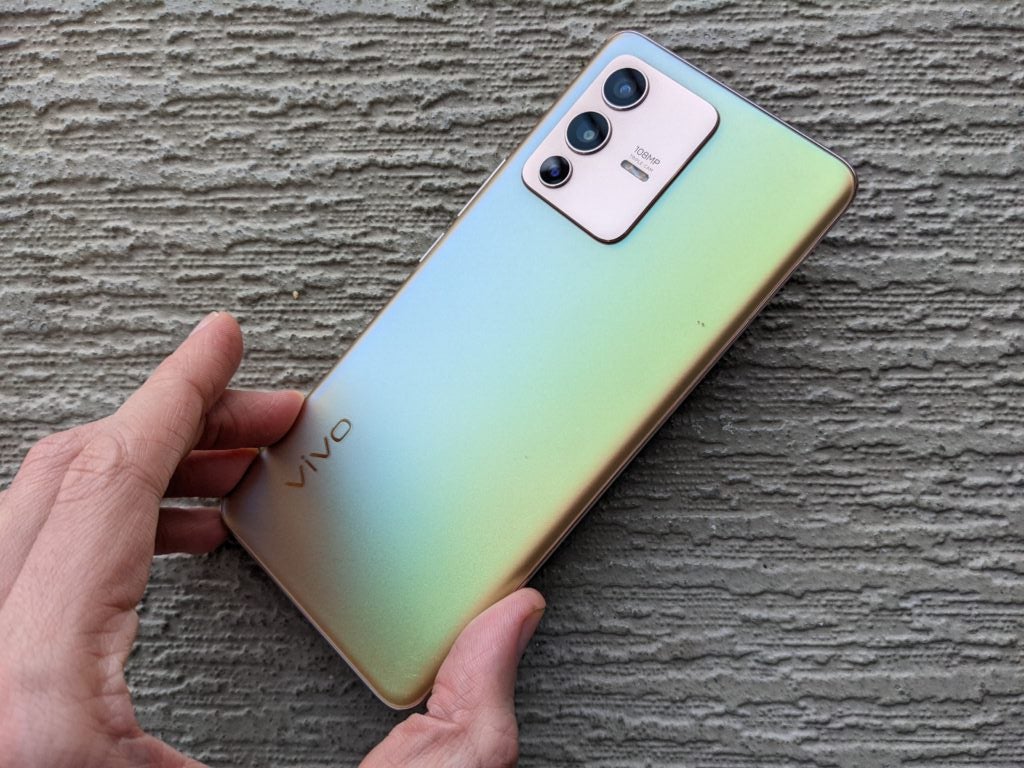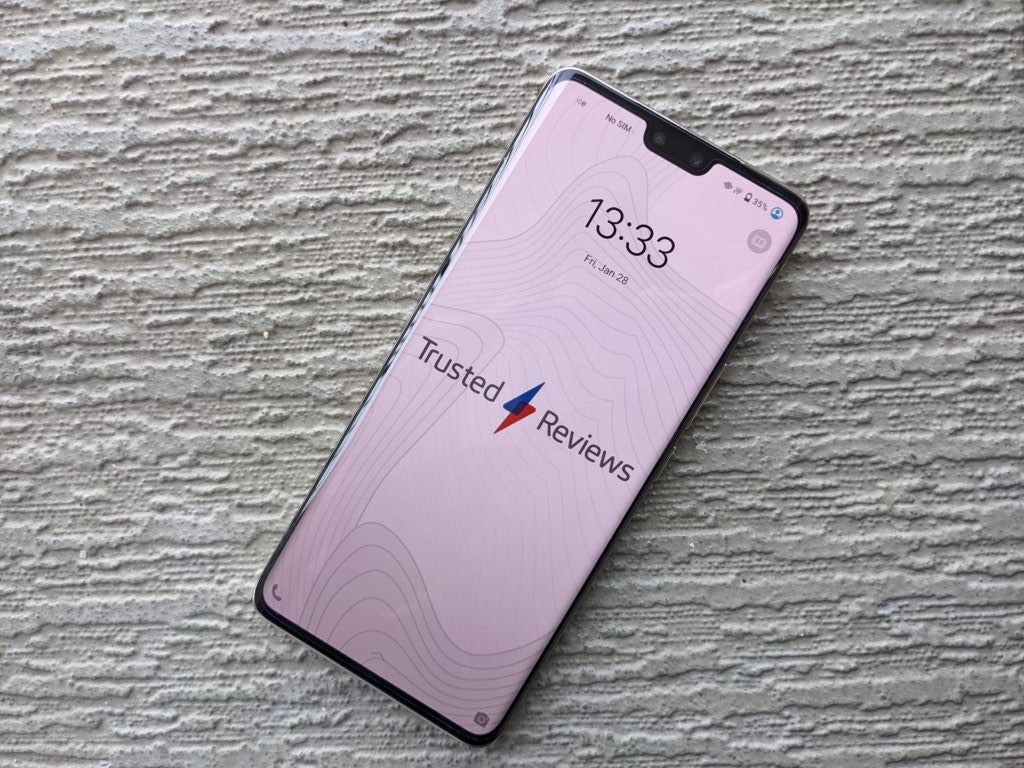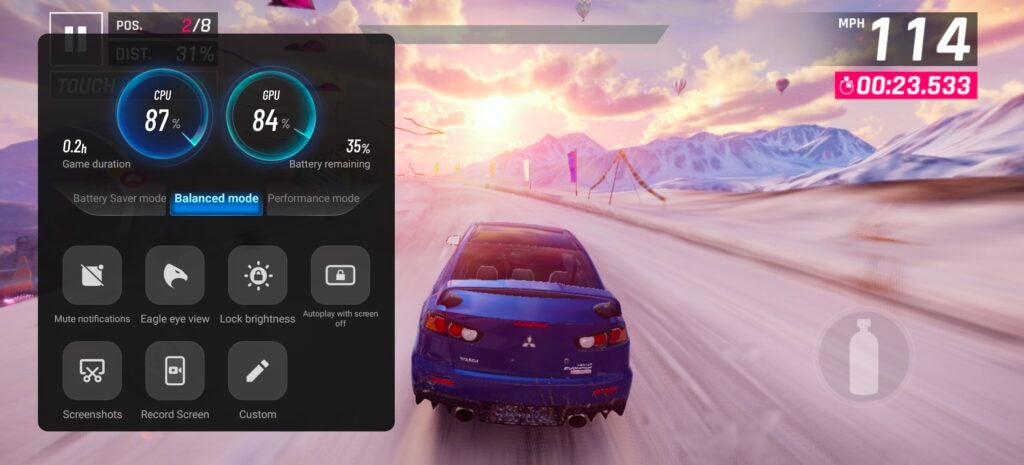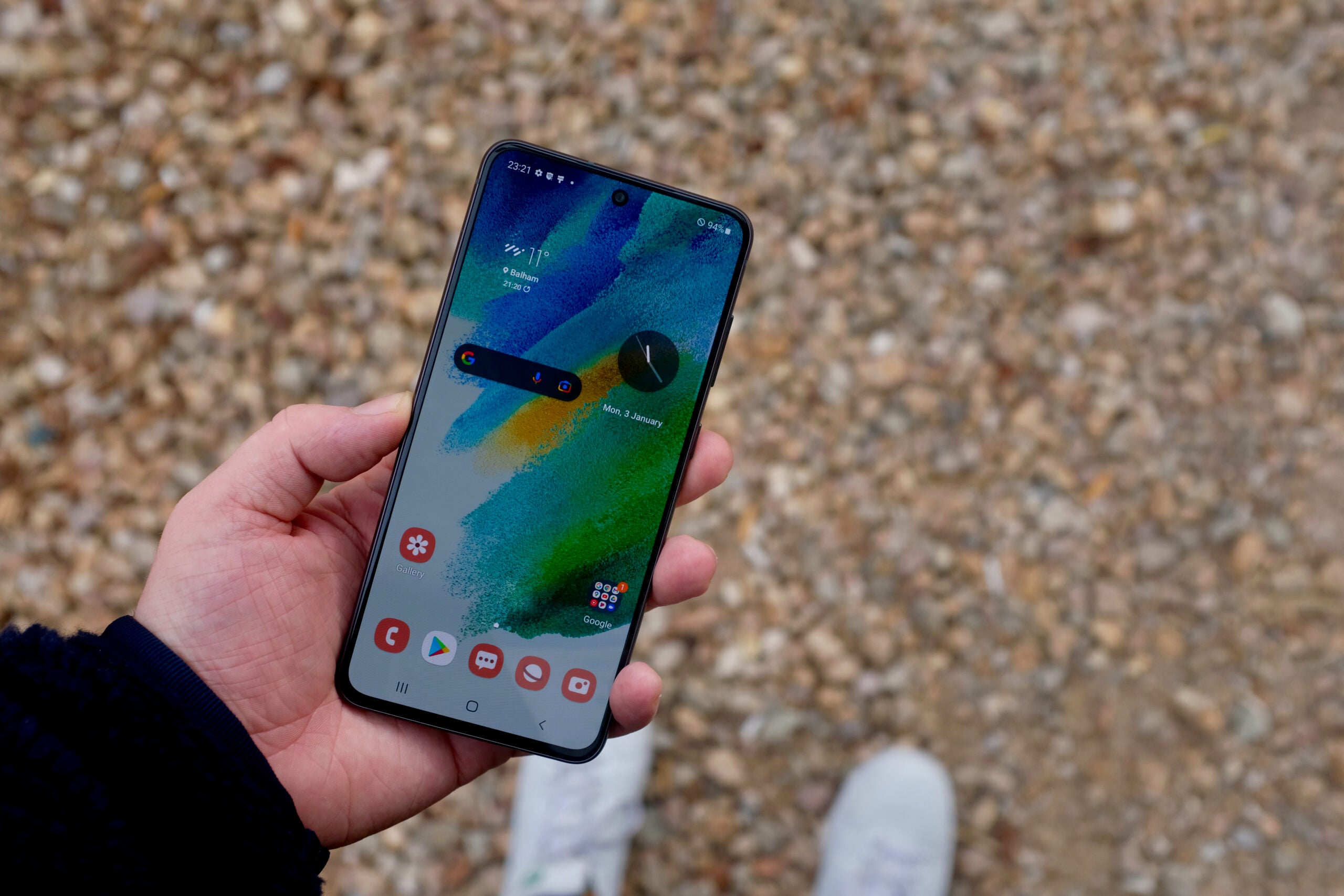Vivo V23 Pro


The Vivo V23 Pro offers a great screen and excellent performance for the money. In general, the camera is very good, too, albeit with a couple of blind spots. Overall, though, it remains a good-value package.
Pros
- Great performance
- Nice screen
- Reliable battery
- Good camera overall
Cons
- Not widely available in the UK
- Camera can struggle with tricky lighting
Key Features
- 108-megapixel cameraThe main sensor on the camera system boasts a high resolution
- 90Hz display refresh rateThe enhanced display refresh rate is significantly smoother than the standard 60Hz
- 44W fast-chargingThe 4300mAh battery can supposedly charge from 1-63% in one hour
Introduction
Vivo may not be a particularly familiar brand in the UK, but it has achieved considerable worldwide success by offering impressive specs at affordable prices – and the Vivo V23 Pro certainly fits into that mould.
Currently available in India for a starting price of ₹38,990 (~£380/€460/$520), the phone is not yet available to buy in the West but that may change over the coming months. This price puts it in the same range as some of the best cheap phones around.
Your eye might well be taken by the boasts of a 108-megapixel camera, 90Hz display refresh rate, or 44W fast-charging, but how does it hold up in real-world testing conditions?
Design and Screen
- Stunning colour-shifting rear panel
- Large, bright screen
- No 3.5mm headphone jack socket, SD card slot, or IP rating
If you opt for the Sunshine Gold edition of the Vivo V23 Pro, then you’ll be in for a treat from the very moment you lift it out of the box. Shifting from a warm yellowish gold to a bluish-green tint, depending on the angle of light hitting the surface, it will certainly stand out from the crowd of rather drab devices to which we’ve become accustomed.
If you’re looking for something that will turn heads, this is the handset for you (and it did receive a couple of compliments from my friends). However, if you prefer to keep a low profile, giving a wide berth to anything that might potentially be described as gaudy, then you’ll probably prefer to go with the Stardust Black version instead.

The curved screen gives way to a metallic finish at the sides of the phone, which lend an attractive premium-looking touch to the handset. Plus, you’ll notice that there’s a USB-C connector and SIM card slot at the base (although there’s no 3.5mm headphone jack, nor a micro SD card slot).

The 6.56-inch AMOLED display is plenty bright and includes HDR10+ support, which delivers an extra ‘pop’ to visual content, while a 90Hz refresh rate makes scrolling across your screen that bit smoother than a standard 60Hz panel. The 1080 x 2376p resolution isn’t stunningly sharp, but it’s certainly clear and crisp enough for regular use –whether you’re watching videos or using social media apps.
Camera
- 108-megapixel sensor produces pleasing daylight images
- Challenging lighting proves a problem
- Ultra-wide lens and 2x digital zoom add extra versatility
- Selfie camera performs well
If there’s one spec that stands out from all of the rest on this phone, then it would be the 108-megapixel camera sensor.
My high hopes hold relatively strong for its daylight performance, where it mostly delivered on the kind of detail and richness for which I was hoping. Unfortunately, it didn’t fare quite as well under other lighting conditions.

The above image shows that the camera brings out a fair amount of detail in the tree branches, and the colours are natural rather than overly vivid.

Again, this daylight snap of Tower Bridge shows off the camera quality with another detail-packed picture of the city’s skyline. Pictures taken under favourable conditions looked very good, and you’d be hard-pressed to find much better than this at the phone’s price point.

Portrait mode is present here, too, and also looks very good, with the subject clearly popping out of the photo with the Bokeh effect applied. Generally, it works very well. It was only when the camera was further away that the ‘cut-out’ wasn’t perfect around my face, with a tiny sliver of the background still in focus. That said, you’d have to inspect the picture fairly closely to notice this, and it didn’t happen often.

One issue that did bother me is plain to see in the above image. The lights at the side haven’t been affected by motion blur, although it may look like it; the camera simply can’t deal with the bright highlights and has blown them out, spoiling the image.
Images taken in very dark conditions can, understandably, look very dingy and fuzzy without Night mode applied.

While some hint of colour and warmth is restored when Night mode is switched on, there isn’t the kind of qualitative difference you might have hoped for, and detail is still severely lacking.

By comparison, a smartphone such as the Google Pixel 4a, which isn’t all that much pricier than this one, delivers vastly better results under the same conditions.

There’s also an 8-megapixel ultra-wide sensor with 120-degree field of view included in this phone’s camera system, which is always useful for some variety when you’re shooting pictures.

The resulting images are decently sharp, although they tend towards more exaggerated colours – and there is some distortion present as well, which is particularly noticeable around the edges of the frame. Nonetheless, it’s still a useful option to have on hand when you want to cram a bit more into your pictures.
There’s no dedicated telephoto zoom lens here, but given the 108-megapixel resolution of the main sensor, it’s well worth trying out the 2x digital zoom.

Above is an example of the digital zoom in action, taken from the exact same position as the image of Tower Bridge earlier in the review. As you can see, the detail holds up very well and makes for a perfectly usable photo. I was impressed by the versatility of the camera system, which gives you a few different tools to work with when you want to take the perfect picture.

The selfie camera has a 50-megapixel resolution, and again I was pleased with the results. Pictures are smooth but remain detailed, and if you’re using the front-facing for video-calling then you’ll be happy with outgoing image quality.
Performance
- Very good performance
- 5G connectivity
- Pre-installed bloatware
The V23 Pro’s chipset is a MediaTek Dimensity 1200, and it acquits itself very well indeed. I didn’t notice any issues such as lag during the day-to-day operations of the phone, and it excelled when playing demanding games on their highest settings as well, without any noticeable drawbacks.
| Test Type | Geekbench 5 Single Core | Geekbench 5 Multi Core | 3DMark Sling Shot | 3DMark Wild Life |
| Score | 854 | 3029 | Maxed Out | 4501 |
Performance scores (above) actually slightly exceed those of the OnePlus Nord 2 across the board, which is a very impressive boast indeed. Given the price of this handset, you’ll get a good deal of bang for your buck, and that includes 5G for the quickest mobile data speeds currently available.

The model we tested comes with an incredible 12GB of RAM, which seems like overkill – but hey, we can’t argue with the great results.
This phone runs on the Android 12 operating system, with the Funtouch 12 user interface overlaid. There are some unique little shortcuts that come with this relatively heavy UI, such as a three-finger swipe down the display for a quick screenshot.
However, there are a few pre-installed apps that clutter up the device on startup. Vivo is by no means at all the worst (or only) offender when it comes to this; in fact, rather a lot of mid-range smartphones come out of the box with a handful or two or apps that I’ll never use, which is slightly grating. I’d prefer to be given the choice to download these myself.
Battery Life
- Good battery life
- Fast-charging claims remain untested
The V23 Pro packs in a 4300mAh, which is a decent but not class-leading capacity, and it delivers a good level of endurance especially considering the demands of 5G and a 90Hz display.
Streaming music over Spotify only dropped the battery by 3% after an hour, for example, while watching Netflix for an hour only consumed 7% of charge. Half an hour of gaming was a bit more taxing, reducing the battery by 8%, but the phone easily saw me through the day, often with 20% to 30% to spare after moderate but regular use.
In publicity materials, it’s been claimed that the Vivo V23 Pro has posted some incredible fast-charging times, thanks to the in-box 44W fast-charger, but the device that we received didn’t include a UK compatible charger, so unfortunately we can’t yet comment on its performance.
Latest deals
Should you buy it?
If you want a reasonably priced smartphone with a good screen and good performance, this one is a good bet for both.
If you’re hoping for a smartphone with great camera performance, you should probably look elsewhere.
Final Thoughts
Overall, the Vivo V23 is a decent phone. Its screen is very good, and the performance and battery life are more than adequate. Despite the high megapixel count, the camera struggles when it cones to more challenging light conditions.
How we test
We test every mobile phone we review thoroughly. We use industry standard tests to compare features properly and we use the phone as our main device over the review period. We’ll always tell you what we find and we never, ever, accept money to review a product.
Used as our main handset during test period
Camera tested in variety of situations with all modes
Tested with synthetic benchmarks and real world use
FAQs
It hasn’t yet been launched in the UK, and is primarily available in India.
In India, it has a starting price of ₹29,990 (~£300/~$400).
No, but there is a 3.5mm to USB-C dongle included in the box.
You can buy a Sunshine Gold or Stardust Black version of the device
Trusted Reviews test data
Full specs
The post Vivo V23 Pro appeared first on Trusted Reviews.
Source Trusted Reviews ,Home Appliances Reviews






No comments